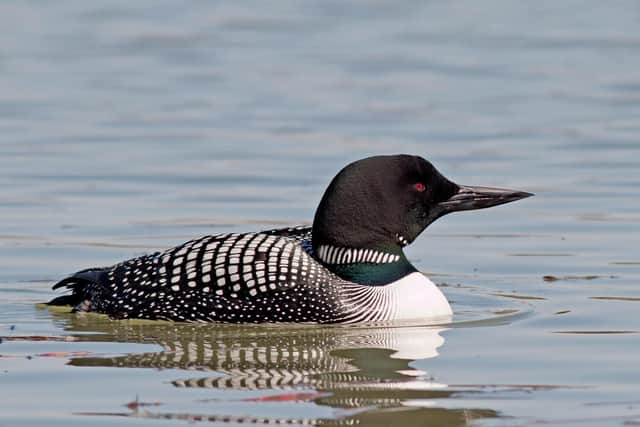One of our most "charismatic" birds, the great northern diver arrives back on Yorkshire shores
In the past week three individuals have taken up residence off Flamborough while others were seen flying south past the headland.
Spurn Bird Observatory recorded six of the birds in one day.
Advertisement
Hide AdAdvertisement
Hide AdIt is a species that is associated with the roughest seas and rockiest coasts of the North Atlantic, and for me it is always a joy to see them, particularly when there are still vestiges of their beautiful summer plumage as some had at Flamborough.


The black head shows a bottle-green tinge in good light. There is a necklace of fine white streaks and another band of bluish-black, but it is the intricately chequered black and white back that always stays in the memory once the bird has dived beneath the surface.
For years it was my holy grail species, the bird I most wanted to see, but sadly the first one I came across was lying dead beside a large box of whale meat on an open air market at Sisimiut in Greenland, where they breed.
Along the east coast of Britain fishermen have given the great northern diver a variety of names, the most widespread being great douker (douk is old Scots for dive). In North America everyone knows it as the common loon and it had a starring role alongside Katharine Hepburn and Henry Fonda in the Oscar-winning 1981 film On Golden Pond, in which the bird’s eerie call was said to welcome them back to their lakeside summer home in New England.
Advertisement
Hide AdAdvertisement
Hide AdThat was typical Hollywood artistic licence, however, because primitive legends associated with great northern divers and their repertoire of unearthly cries have darker connotations.
In Nordic folklore their tremulous calls at night are said to be emitted as they accompany the souls of the dead into the next world. Native North Americans firmly believed that the long wail, which sounds like a howling wolf, was followed by rain.
The Ojibwa people even believed that the bird actually created the world.
Lovers of the children’s fiction by Arthur Ransome will be familiar with his novel Great Northern? in which his recurring characters the Swallows and Amazons are convinced they have found a pair of the divers nesting on a Hebridean island even though the birds don’t breed in the UK.
Advertisement
Hide AdAdvertisement
Hide AdBack in Yorkshire, besides Flamborough and Spurn the most reliable locations for seeing great northerns are off South Gare, below the mouth of the River Tees, and in the sea at Filey Brigg, where I have only ever seen them in their dark brown and white winter livery, described as “scruffy” by some birdwatchers who know their beautiful breeding plumage.
Occasionally they are driven inland by strong winds and can turn up almost anywhere. Wintersett Reservoir near Wakefield has had several records over the years, and one shot while flying over Silsden Moor in 1965 now resides in a glass case at Cliffe Castle Museum, Keighley.
Support The Yorkshire Post and become a subscriber today. Your subscription will help us to continue to bring quality news to the people of Yorkshire. In return, you'll see fewer ads on site, get free access to our app and receive exclusive members-only offers. Click here to subscribe.Link to use: https://www.yorkshirepost.co.uk/subscriptions
Comment Guidelines
National World encourages reader discussion on our stories. User feedback, insights and back-and-forth exchanges add a rich layer of context to reporting. Please review our Community Guidelines before commenting.